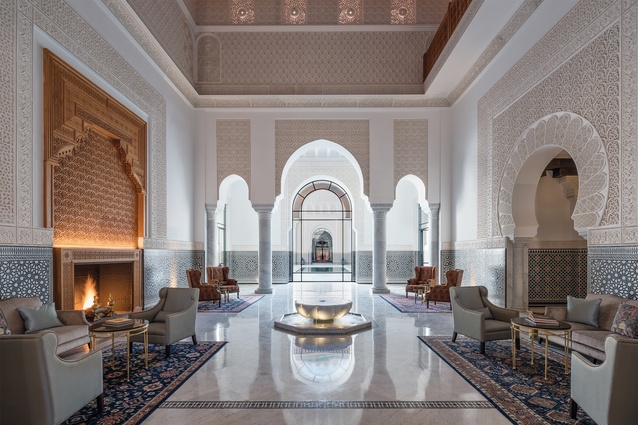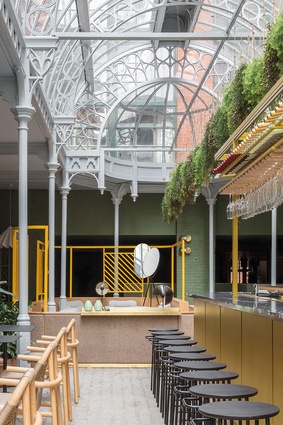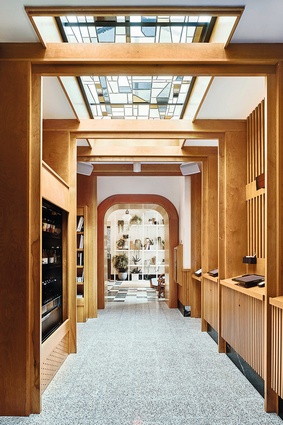Hotels in flux: Part five
Part five is our hotel forecast: Whether you are in the market for an avant-garde, open-house-style hotel or a reliable five-star chain, there is a long list of impressive properties opening in 2020 and beyond asking to be discovered. Here’s what you may find inside.
[Editor’s note: This series about the future of the hotel industry was produced for print publication and mostly before the COVID-19 pandemic. As such, a lot of the statistical figures and trend forecasts have and will continue to change drastically due to the closure of international borders, lockdown and the financial repercussions of both. Parts of this series will be updated with current, post-pandemic information and we will make a note if and when the online version of the article differs from the published version.]
When it comes to fashionable, unique looks and quirky interiors, some home-owners can be wary of taking chances on the interiors of their own homes. However, when it comes to hotel design, a signature look and brand is imperative. Hotels won’t just be neutral palettes that provide settings for travel experiences – they are now pushing the limits of design and exploring future unique trend narratives.
Brave and innovative materiality, colour and concepts will encourage guests to embrace new design perspectives and, maybe, even bring them back into their residential lives. To add to this wow factor, hotel interiors will increasingly see commissioned and significant pieces of art in both suites and communal areas. These stunning and provocative hospitality interiors are there to be fully enjoyed.
Along with superb service, the global traveller will expect, more and more, to be told a story when they stay at a hotel. They will be interested in staying at a particular hotel because of its point of difference. Each proprietor is increasingly seeking to create their uniqueness through an authentic brand. Developing a clever concept that is truthful to the brand is key for creating a mood, space and place that the customer is looking for. Many hotel brands have several properties in different locations worldwide, meaning that real spaces, and authentic stories, will create memorable experiences and convince customers to be ardent brand ambassadors the world over.
In a social-media-driven society that accepts nothing less than perfectly photographable spaces, distinctive interiors are key to ensuring that guests share imagery and that the hotel’s brand connects with customers. Running parallel to this social-media-savvy world is a population that is more and more alone, with many hotel guests travelling unaccompanied. Shared spaces within hotels that are cleverly designed to encourage socialisation whilst also allowing people to be by themselves will be crucial to satisfying travellers. Many hotels have already decided to ditch the in-room mini bar and focus instead on communal areas that are retreat-worthy.
What will continue to be very popular are open-house-type hotels, which are inspired by the vibes and geographic areas that surround them. The popular idea of localisation will continue and hotels will aim to deliver locally inspired interiors – interiors where, when sitting inside, you know where you are located in the world without going outside. Even within multi-chain hotels, individual locations proudly celebrate the special characters and qualities of their unique surroundings, often expressed through a hotel’s interior design.
Knowing that the hospitality industry as a whole has a huge environmental impact, travellers are, more than ever, expecting hotels to run their properties sustainably. Going forward, sustainability will be more than just environmental management, it will increasingly encompass social and cultural concerns. Examples of this are promoting work–life balance, celebrating local culture and art, encouraging inclusivity, promoting staff well-being, stimulating entrepreneurship and continuing to source supplies locally.
Wider shifts in thinking within technology will be key in the way forward for the hospitality industry, as with all design and architecture. Hotel design is likely to be empowered by technology, not ruled by the high-tech gadgets we have seen of late. The realisation now is that technology cannot replace real people. Technology will be merely in the background and person-to-person connection will be a valuable commodity for any hotel. Because of this, hotel interiors will likely become cleaner and less busy with technology, with any technological devices preferably hidden away and used less and less.
Wellness is now also becoming imperative for hotel designers and proprietors. Hotel experiences are expected to focus on improving their guests’ wellness, from when they arrive. This starts with room and hotel layout. At its simplest, this could mean rooms fitted with lighting and temperature set optimally for rest and relaxation, as well as space for guests to roll out their own yoga mats or foam rollers, or furnishings made from natural materials like organic fibre or spring-free mattresses.
Some hotels are beginning to offer recovery and wellness IV-drip treatments in hotel rooms, and hotel gyms are offering more than a drab treadmill in a windowless basement room. Just like the rest of the design world, hospitality will see a focus on this biophilic way of designing spaces.
The trajectory for hotel design is not dissimilar from what we expect to see across all interior trends – unique, authentic, sustainable design, embracing technology in a responsible, discreet way, and delivering on the need for human health and wellness in the built environment. As if we need any more reason to travel.
Click here to see more from the Hotels in flux series.













